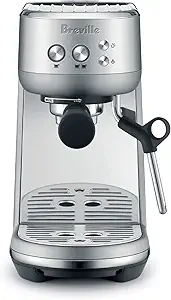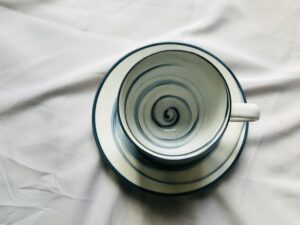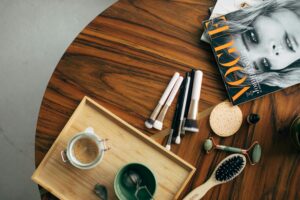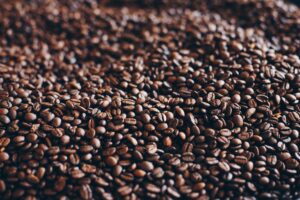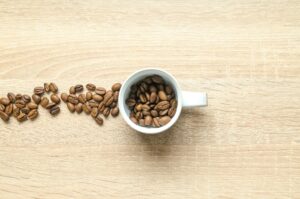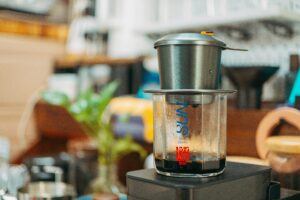Introduction: A Cup of Perfection Starts Here
Good morning, class! Today, we are diving into a world filled with rich aromas, bold flavors, and a hint of magic—yes, we are talking about coffee. But not just any coffee—I’m here to teach you how to make barista-level coffee right at home. So, grab your notepads because by the end of this lecture, you won’t just be making coffee; you’ll be crafting perfection in a cup.
Table of Contents
Let me start with a question: Have you ever wondered why your favorite café’s coffee tastes so much better than your home brew?
Is it the beans? The water? The equipment? Well, you’re about to find out.
1. Choosing the Right Beans: Your Flavor Foundation
Let me share a quick story. A friend of mine once complained that his home coffee tasted bland. When I asked about his beans, he shrugged, “Whatever’s on sale.” That’s mistake number one.
Why Beans Matter
The type of coffee beans you use is the foundation of your brew. If you start with low-quality beans, no amount of technique will make your coffee taste amazing.
Types of Beans:
- Arabica: Smooth, mild flavor with a hint of sweetness. Perfect for those who love a delicate brew.
- Robusta: Strong, bold, and slightly bitter. Ideal for those who prefer a caffeine kick.
- Single-Origin vs. Blends: Single-origin beans offer a unique flavor profile, while blends provide a balanced taste.
Pro Tip:
Always buy freshly roasted beans. Look for a roast date, not just an expiration date. Beans are best within two weeks of roasting.
Interactive Moment: Taste Test
Next time you visit a café, try a single-origin coffee and a blend. Notice the differences in flavor—understanding this will improve your choices at home.
2. Mastering the Grind: Consistency is Key
Imagine this: You’re painting a masterpiece, but your brush has frayed bristles. Can you create smooth lines? No. The same goes for your coffee grind.
Why Grinding Matters
The grind size directly affects the flavor and strength of your coffee. Too coarse, and it’s weak and watery. Too fine, and it’s bitter and over-extracted.
Grind Sizes Explained:
- Coarse: Ideal for French press and cold brew.
- Medium: Perfect for drip coffee makers.
- Fine: Best for espresso machines.
- Extra Fine: For Turkish coffee.
Breville Bambino Espresso Machine BES450BSS
Pro Tip:
Invest in a burr grinder, not a blade grinder. Burr grinders ensure a consistent grind size, which is essential for a perfect brew.
Real-World Example:
I once used a blade grinder for a French press and ended up with a bitter, muddy brew. Switching to a burr grinder transformed the experience.
3. The Secret Ingredient: Water Quality and Temperature
Here’s a fun fact: Coffee is 98% water. So, it makes sense that water quality is crucial. But how often do you think about the water you use?
Why Water Quality Matters
- Filtered Water: Always use clean, filtered water to avoid chlorine or mineral flavors.
- Ideal Temperature: The water should be between 195°F to 205°F (90°C to 96°C). Anything below 195°F won’t extract enough flavor, while above 205°F will burn the coffee.
Pro Tip:
If you don’t have a thermometer, bring water to a boil, then let it sit for 30 seconds before pouring.
Storytime: The Boiling Mistake
A friend of mine used boiling water straight from the kettle for his pour-over. His coffee tasted burnt every time. Adjusting the water temperature was a game changer.
4. Brewing Methods: Choose Your Style
Alright, future baristas, it’s time to choose your weapon. The brewing method you use has a massive impact on your coffee’s flavor.
Popular Brewing Methods:
- French Press: Rich, full-bodied flavor. Great for those who love strong coffee.
- Pour-Over (V60 or Chemex): Clean, crisp, and delicate flavors. Perfect for those who appreciate subtlety.
- Espresso Machine: Concentrated, bold, and strong. Ideal for making lattes, cappuccinos, or straight espresso shots.
- Aeropress: Quick, versatile, and portable. Perfect for experimenting with flavors.
Interactive Exercise:
Try brewing the same coffee beans using two different methods—say, French press and pour-over. Notice how the flavor profile changes.
Pro Tip:
Always measure your coffee and water ratio. A good starting point is 1:15 (coffee to water) for most methods.
5. The Final Touch: Milk and Frothing
Ever wonder why your café’s latte is so creamy? It’s all in the milk frothing. But don’t worry, you don’t need a fancy espresso machine to create that creamy texture.
Milk Frothing Methods:
- Manual Frother: Great for beginners. Simply pump the frother until you get creamy foam.
- French Press: Yes, you can froth milk using a French press. Heat your milk, pour it into the press, and pump the plunger up and down until frothy.
- Handheld Frother: An affordable, battery-operated option that works wonders.
Milk Choices:
- Whole Milk: Creamy, rich, and perfect for a classic latte.
- Oat Milk: A great dairy-free alternative with a creamy texture.
- Almond or Soy Milk: Lighter options with distinct flavors.
Storytime: The Milk Upgrade
A student of mine once made a cappuccino using cold, skim milk. It was flat and lacked texture. Once she switched to whole milk and frothed it properly, her coffee was transformed.
6. Advanced Tips: Making Your Coffee a Work of Art
Want to take your barista skills to the next level? Let’s talk about some pro techniques:
Latte Art Basics:
- Start with a Microfoam: This is milk that is velvety and smooth, without large bubbles.
- Pour with Precision: Start with a thin stream to mix with the espresso, then raise the pitcher and pour faster to create designs.
- Simple Designs: Start with a heart or a rosette. Master these before moving on to more complex designs.
Pro Tip:
Practice makes perfect. Don’t be discouraged if your first few attempts look like a blob instead of a heart. Even the best baristas started somewhere.
Frequently Asked Questions (FAQs)
Q1: Can I make great coffee without expensive equipment?
A1: Absolutely! While a good grinder helps, even a basic pour-over setup can make amazing coffee with the right technique.
Q2: What’s the best milk for frothing?
A2: Whole milk is the best for creamy foam, but oat milk is an excellent dairy-free alternative.
Q3: How do I make iced coffee that isn’t watered down?
A3: Brew a strong coffee concentrate or use the cold brew method. You can also use coffee ice cubes to keep it strong.
Q4: Should I store coffee beans in the fridge?
A4: No, store them in an airtight container at room temperature, away from light and heat.
Conclusion: Brew Like a Pro
Congratulations, class! You’ve just graduated from home coffee basics to barista-level expertise. Remember, the secret to a perfect cup is in the details—quality beans, precise grind, optimal water temperature, and careful brewing.
Now, go ahead and make that first amazing cup. Share it with someone, and tell them you learned from the best. And who knows? You might even inspire them to become a home barista too.

